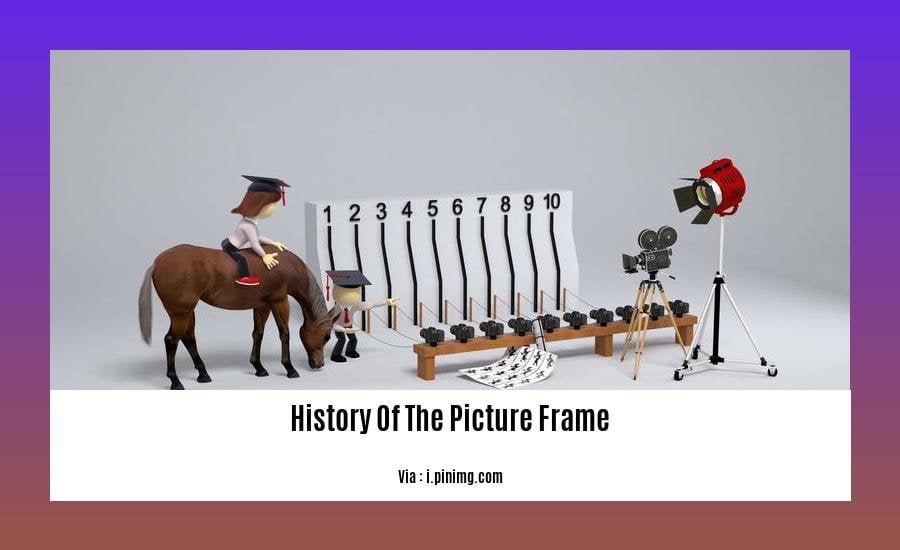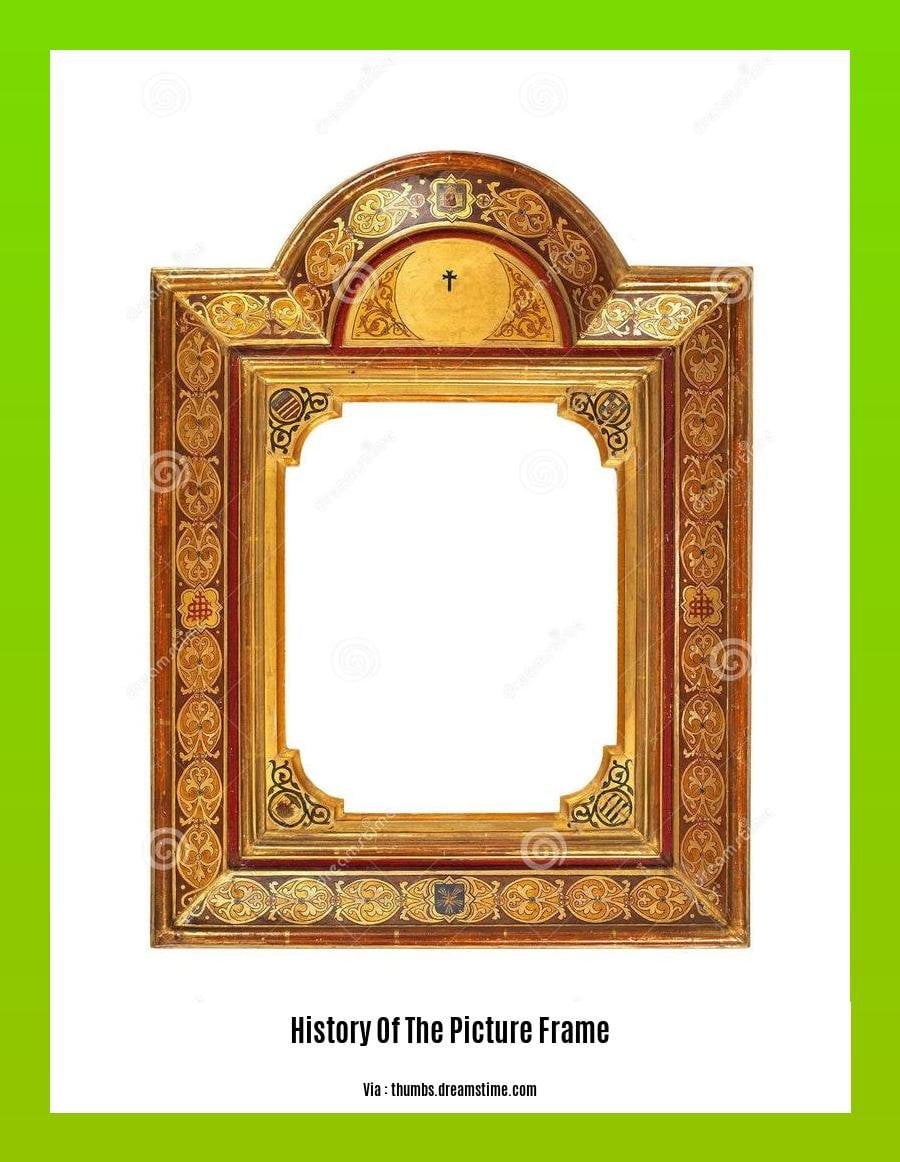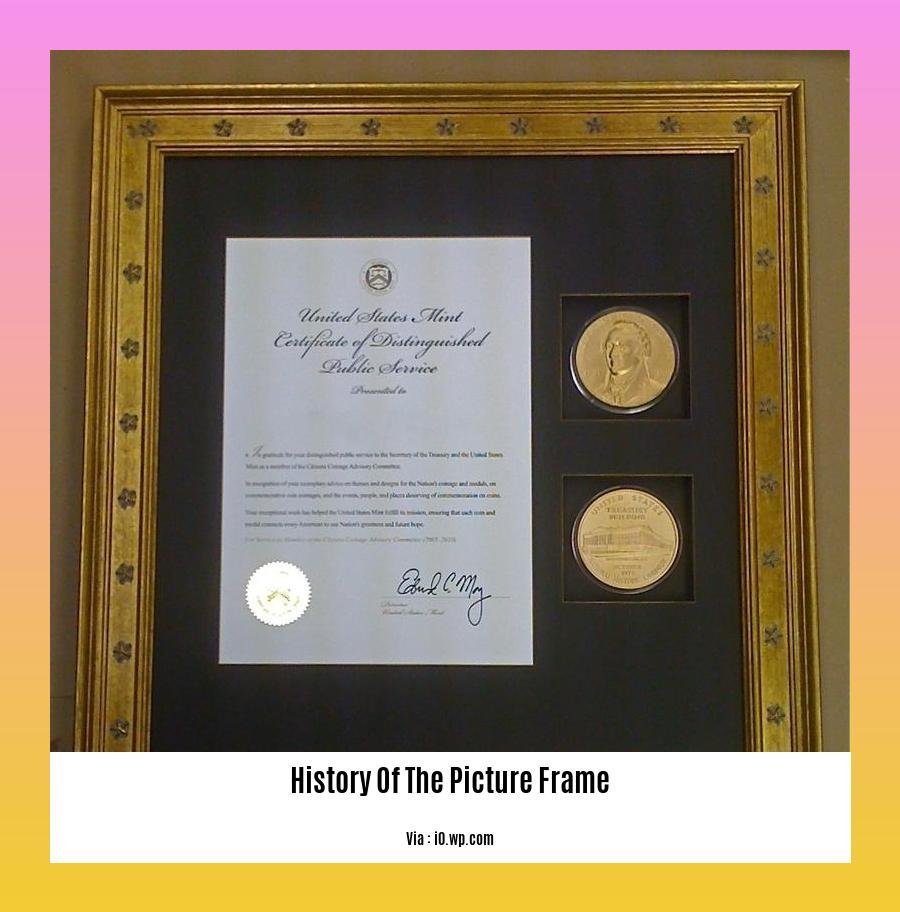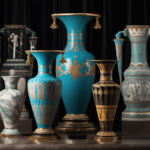Embark on [A Journey Through Time: Exploring the History of the Picture Frame] and delve into the fascinating evolution of these often-overlooked yet essential components of the art world. From their humble origins as protective barriers to their transformation into elaborate works of art in their own right, picture frames have played a crucial role in shaping the presentation and perception of artworks throughout history. Join us as we uncover the stories behind these intricate creations and explore how they have mirrored the changing artistic styles and cultural influences of their time.
Key Takeaways:
A picture frame is a container that borders a picture for protection and visual appreciation.
Picture frames were originally made of wood but can now be made of metals or rigid plastics.
Frames come in many profiles, typically L-shaped with an upward “lip” and a horizontal rabbet to hold the frame glazing, spacer or mat, the object, and backing boards.
The History of the Picture Frame

A picture frame is akin to a stage upon which a work of art performs. It’s a border that unites the art with the environment while also creating an aesthetic context. Picture frames have an intriguing journey, reflecting the evolution of artistic movements and the shifting preferences of patrons and artists throughout time. Let’s delve into the fascinating history of the picture frame.
Ancient Origins
The earliest picture frames date back to ancient Egypt, where they were crafted from wood or reeds to protect sacred images and paintings. The Romans, too, utilized frames, often made of bronze or marble, to showcase portraits and landscapes. These early frames were often adorned with intricate carvings and embellishments, reflecting the artistic style of the era.
Renaissance and Beyond
During the Renaissance, the art of frame-making flourished. Frames became more elaborate and ornate, echoing the opulence and grandeur of the period. Artisans employed a variety of materials, including wood, metal, and gesso, to create intricate and decorative frames that complemented the paintings they housed. Famous artists like Michelangelo and Raphael designed their own frames, further elevating the status of these functional objects into works of art in their own right.
The Modern Era
The 19th century witnessed a shift toward simpler and more understated frames. The emphasis was on complementing the artwork rather than overwhelming it. Frames were crafted from a wide range of materials, including wood, metal, and plastic, and often featured clean lines and simple ornamentation. This trend continues to dominate contemporary framing, with minimalist frames allowing the artwork to take center stage.
A Canvas of Expression
Picture frames have played a significant role in shaping the presentation and perception of artworks throughout history. They not only protect and display art but also influence its interpretation. A well-chosen frame can enhance the mood, tone, and overall impact of a piece, drawing the viewer’s attention to specific elements and creating a cohesive visual experience.
Conclusion
From humble beginnings to elaborate masterpieces, the history of the picture frame is a testament to the enduring power of art and design. Picture frames are not mere accessories; they are integral to the artwork’s presentation and, in some cases, even enhance its meaning. As we continue to appreciate and admire the great works of art, let us not overlook the significance of the frames that surround them.
Want to know about the evolution of the humble golf cart? Follow this link! History of the golf cart
Does the creation of the Korean alphabet intrigue you? Then click here to learn about its fascinating history! History of the Korean alphabet
Curious about the backstory of the iconic Snickers candy bar? We’ve got you covered! History of the Snickers candy bar
The emergence of decorative and ornate frames during the Baroque and Rococo periods, reflecting the artistic styles of the era

Driven by the Counter-Reformation’s fervor and the consolidation of absolute monarchies, Baroque art surged in the 16th century. This era celebrated extravagance, movement, and drama, expressing the power of the church and the grandeur of royal courts.
Picture frames, often overlooked yet integral to the art experience, underwent a remarkable transformation during this period. They evolved from mere protective casings to opulent embellishments, echoing the artistic styles of the time.
Elaborate Frames: A Reflection of Baroque Splendor
Baroque frames embraced grandeur, mirroring the ornate and dynamic style of the era. Artists like Bernini and Caravaggio adorned their paintings with frames featuring cherubs, swirling acanthus leaves, and intricate carvings. Gilded in gold or silver, these frames complemented the rich colors and lavish ornamentation that defined Baroque art.
The Theatricality of Rococo Frames
Succeeding the Baroque period, Rococo emerged in the early 18th century, bringing with it a lighter and more playful aesthetic. Frames of this period reflected this shift, embodying the era’s emphasis on frivolity and asymmetry.
Rococo frames often featured asymmetrical curves, delicate carvings, and pastel colors. They incorporated elements like flowers, scrolls, and rocaille, embodying the era’s love of nature and decorative arts. These frames transformed paintings into theatrical stage sets, enhancing the immersive experience of Rococo art.
Key Takeaways:
- Baroque and Rococo frames reflected the artistic styles of their respective eras, enhancing the impact and presentation of artworks.
- Baroque frames embraced grandeur and opulence, featuring intricate carvings, cherubs, and lavish ornamentation, often gilded in gold or silver.
- Rococo frames embodied the playful and asymmetrical aesthetic of the period, incorporating delicate carvings, pastel colors, and motifs like flowers and rocaille.
- Picture frames evolved from protective casings to elaborate embellishments, becoming integral to the overall artistic experience during the Baroque and Rococo periods.
Citations:
Baroque Art and Architecture
The 7 Most Important Features of the Baroque
The impact of industrialization on frame production, leading to the proliferation of mass-produced frames in the 19th century
Picture frames, once meticulously handcrafted by skilled artisans, underwent a profound transformation during the 19th century as industrialization swept across the globe. The advent of machinery and mass production techniques revolutionized frame making, leading to a proliferation of factory-produced frames that were both affordable and accessible to the growing middle class.
The Industrial Revolution and Its Impact on Frame Production
The Industrial Revolution, which originated in Britain in the late 18th century, brought about significant changes to various industries, including frame making. The introduction of steam-powered machinery and mass production methods transformed the production process, enabling the efficient and rapid creation of frames in large quantities.
Key Takeaways:
- Industrialization ushered in a new era of frame production, characterized by the widespread use of machinery and mass production techniques.
- Factory-made frames became increasingly affordable, making them accessible to a broader segment of the population.
- Mass production allowed for greater standardization of frame designs, resulting in a more uniform appearance.
- The availability of mass-produced frames facilitated the growing popularity of framed artwork in homes and public spaces.
- Industrialization revolutionized the frame-making industry, transforming it from a craft-based practice to a large-scale manufacturing process.
The Rise of Mass-Produced Frames
Prior to industrialization, picture frames were predominantly custom-made by individual artisans. However, the advent of mass production techniques, such as steam-powered machinery and assembly lines, made it possible to produce frames in large quantities and at a significantly lower cost. This led to the proliferation of mass-produced frames that were both affordable and widely available.
The Impact on Art and Society
The proliferation of mass-produced frames had a profound impact on the art world. Previously, only the wealthy and elite could afford to commission custom-made frames for their artworks. However, with the advent of factory-made frames, the middle class and even the working class could now afford to frame their own artwork, leading to a democratization of art appreciation.
Conclusion
The industrialization of frame production in the 19th century had a transformative impact on the art world. The proliferation of mass-produced frames made it possible for people from all walks of life to enjoy and display artwork in their homes, fostering a greater appreciation for art and contributing to the democratization of art.
References:
Picture Frames in the 19th Century: A History of Industrialization
The Industrial Revolution and the Picture Frame
The role of contemporary artists in challenging traditional notions of framing and integrating frames as integral elements of their artworks
Contemporary artists are pushing the boundaries of traditional framing, using frames as integral elements of their artworks to convey new meanings and challenge the way we perceive art.
Breaking Conventions:
– Artists are experimenting with unconventional materials like recycled items, found objects, and digital media to create frames that are as unique as the artworks they house.
– By breaking away from conventional materials and techniques, artists challenge the traditional role of the frame as a mere accessory and elevate it to an essential part of the artwork’s identity.
Narrative Expansion:
– Frames are becoming storytelling devices, extending the narrative beyond the artwork itself.
– Artists use frames to provide context, tell stories, or even create interactive experiences that engage viewers on a deeper level.
– This approach blurs the boundaries between the artwork and its frame, creating a cohesive and immersive experience.
Integration and Collaboration:
– Some contemporary artists are taking the collaboration between artist and frame maker one step further by creating their own frames.
– By controlling every aspect of the framing process, artists ensure that the frame perfectly complements and enhances the artwork, creating a unified vision.
Key Takeaways:
- Contemporary artists are challenging traditional notions of framing by using unconventional materials and techniques.
- Frames are becoming storytelling devices, extending the narrative beyond the artwork itself.
- Some artists are creating their own frames to achieve a unified vision and enhance the artwork’s impact.
Sources:
- Artists Challenge Traditional Framing Conventions
- The Frame as Art: Artists Who Make Their Own Frames
FAQ
Q1: How did picture frames evolve from their humble origins as protective enclosures to becoming integral components of artistic expression?
Q2: What are some key characteristics of Baroque-era picture frames, and how did they reflect the artistic and cultural context of the time?
Q3: How did industrialization impact the production and design of picture frames, and what were some of the consequences for the art world?
Q4: Why are picture frames now considered artworks in their own right, and what factors have contributed to this shift in perception?
Q5: Can you provide examples of artists who have challenged traditional conventions through their innovative use of picture frames, and how have their works influenced the field of contemporary art?
- Guatemala vs. Costa Rica: Plan Your Trip Smartly - April 16, 2025
- Master Types of Pumps: Ultimate Guide to Selection - April 16, 2025
- Unlock Types of Makeup Secrets: Master Any Look Now - April 16, 2025
















